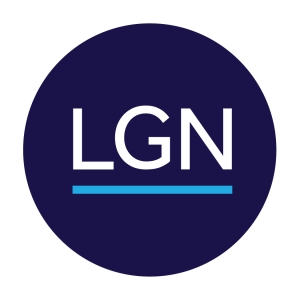COVID-19
WORKPLACE PROTECTIONS STILL APPLY WHEN YOU WORK FROM HOME
/in COVID-19, COVID-19 Business Resources, COVID-19 Federal Government Updates, COVID-19 Municipal Resources, COVID-19 State Government Updates /by dwilliams@razorrank.comCOVID-19
LGN FEDERAL UPDATE: MAY 11
/in COVID-19, COVID-19 Business Resources, COVID-19 Federal Government Updates, COVID-19 Municipal Resources, COVID-19 State Government Updates /by dwilliams@razorrank.comCOVID-19
MASKS AND RESPIRATORS FOR COVID-19 – WHAT EMPLOYERS NEED TO KNOW
/in COVID-19, COVID-19 Business Resources, COVID-19 Federal Government Updates, COVID-19 Municipal Resources, COVID-19 State Government Updates, David W. Asp, Harry E. Gallaher, Susan E. Ellingstad /by James McEwenUncategorized
EMPLOYER BEST PRACTICES AND PROACTIVE MEASURES FOR REOPENING
/in COVID-19, COVID-19 Business Resources, COVID-19 Federal Government Updates, COVID-19 Municipal Resources, COVID-19 State Government Updates, Uncategorized /by dwilliams@razorrank.comCOVID-19
LGN FEDERAL CORONAVIRUS UPDATE: APRIL 27
/in COVID-19, COVID-19 Business Resources, COVID-19 Federal Government Updates, COVID-19 Municipal Resources, COVID-19 State Government Updates /by James McEwenCOVID-19
RETURNING TO THE WORKPLACE
/in COVID-19, COVID-19 Business Resources, COVID-19 Federal Government Updates, COVID-19 Municipal Resources, COVID-19 State Government Updates /by James McEwenCOVID-19
MINNESOTA DEED TEMPLATE PREPAREDNESS PLAN AND RESOURCES
/in COVID-19, COVID-19 Business Resources, COVID-19 Federal Government Updates, COVID-19 Municipal Resources, COVID-19 State Government Updates /by James McEwenCOVID-19
EEOC CONFIRMS EMPLOYERS’ ABILITY TO TEST FOR COVID-19
/in COVID-19, COVID-19 Business Resources, COVID-19 Federal Government Updates, COVID-19 Municipal Resources, COVID-19 State Government Updates /by James McEwenNews
LGN Associate Stephanie Chen Named Vice President of Communications of the Minnesota Asian Pacific American Bar Association
/in News /by dwilliams@razorrank.comPractices
Practices Cont.
- Federal Government Relations
- Government Representation
- Health Care Law
- Intellectual Property
- Mass Torts
- Personal Injury, Defective Drugs, and Medical Devices
- Political Law
- Products Liability & Consumer Fraud Litigation
- Real Estate & Land Use
- Securities Litigation
- State and Local Government Relations
- Tribal Government Representation
Minneapolis
Lockridge Grindal Nauen PLLP
100 Washington Avenue South
Suite 2200
Minneapolis, Minnesota 55401-2179
Phone: 612-339-6900
Chicago
Lockridge Grindal Nauen PLLP
1165 N. Clark Street
Suite 700
Chicago, IL 60610
Phone: 312-205-8968
Boston
Lockridge Grindal Nauen PLLP
265 Franklin Street
Suite 1702
Boston, MA 02110
Phone: 617-535-3763
